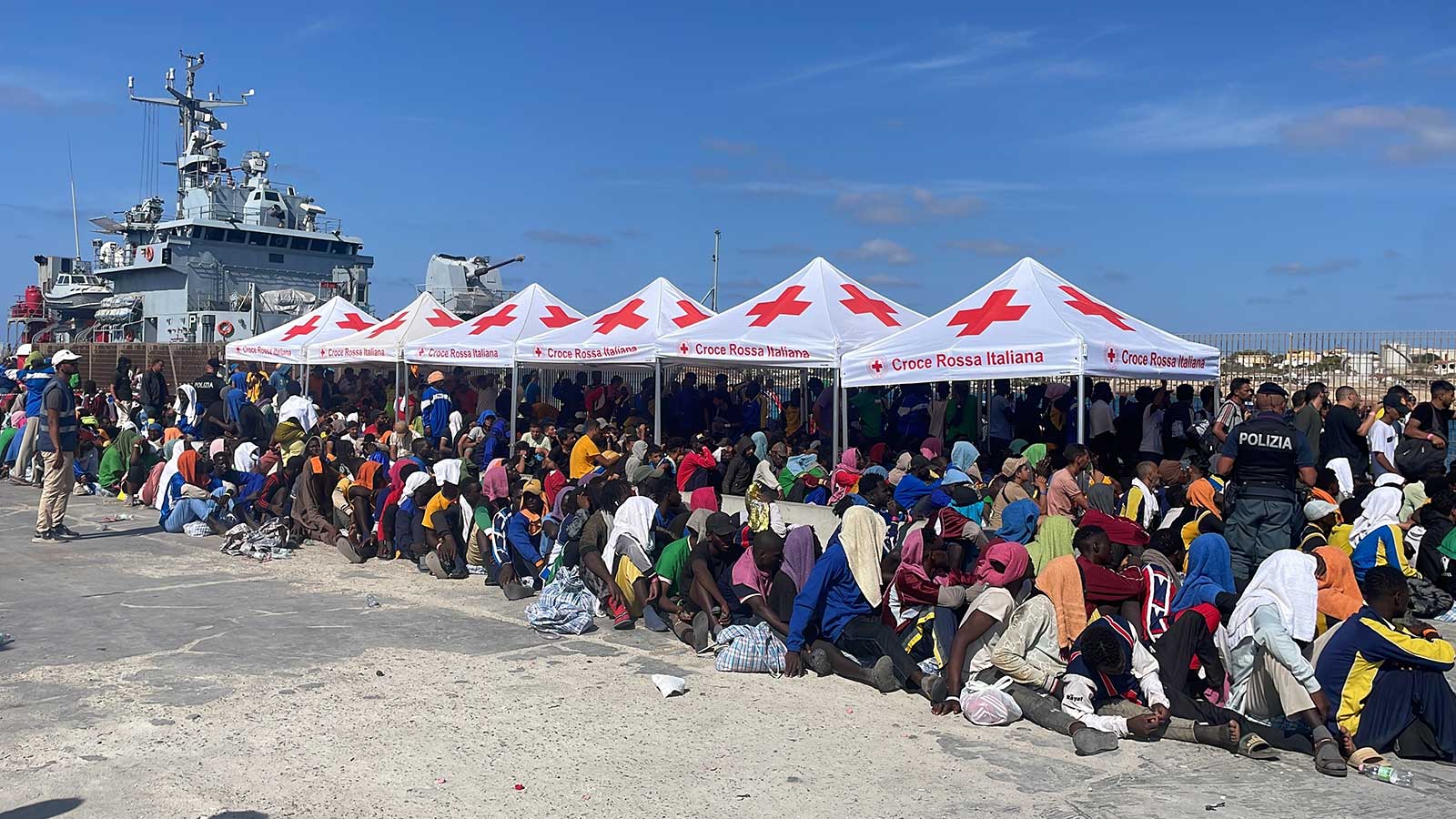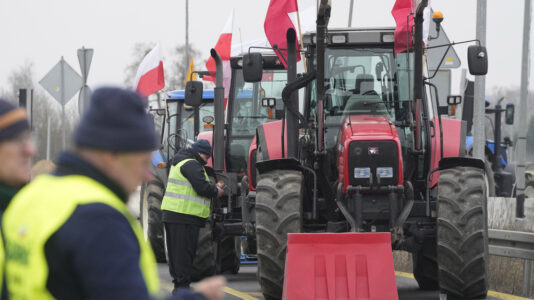Nearly 3,000 new arrivals have landed on Lampedusa since last Wednesday, as the Italian island continues to bear the brunt of illegal immigration into Europe.
According to official figures, a total of 2,870 illegal migrants docked on the island in the past few days from 67 small boats — the majority of which originated from Tunisia, located around 113 kilometers from the EU territory.
Migrants have taken advantage of fairer sailing conditions to make the trip to the island, which has been viewed by the tens of thousands to land there in recent years as a gateway to Europe, with hundreds arriving each day since Wednesday and a further 401 people landing in 9 small boats as of 8 p.m. on Sunday.
On one boat, migrants from Benin, Cameroon, Ivory Coast, and Guinea told Italian media they had left Zuwara in Libya early on Sunday morning after paying traffickers 5,000 Libyan Dinar or around €954 for a place on the crossing.
The island, populated by just 6,000 natives, has long been overcrowded due to the influx of illegal immigrants from Africa, with local officials complaining about the saturation of local services and asylum centers full to the brim.
In September last year, more than 6,000 migrants landed on the island in one day, prompting Italian Deputy Prime Minister Matteo Salvini to declare the arrival of 120 small boats “a declaration of war on Europe.”
“I feel instinctively that I have to protect my children because I don’t know what will happen to Lampedusa in the future,” one local told journalists after European Commission President Ursula von der Leyen visited the island days after the mass influx.
“We don’t want tent camps. This is our message to Europe and the Italian government. The citizens of Lampedusa are tired,” he added.
Italian Prime Minister Giorgia Meloni has come under criticism by many on the right for failing to tackle the surge in illegal immigration despite it being her most clear electoral promise following her rise to power in September 2022.
The migrant hotspot has also raised alarm bells in other areas of Europe where due to the recently agreed EU Migration Pact new arrivals will be distributed.
Parisian residents told French broadcaster CNews they feared the next influx of migrants from the Italian island, explaining they already do not feel safe due to the migrant ghettos reemerging in the French capital and feel intimidated by groups of adult males loitering in their neighborhoods.
[pp id=95234]
In Poland last October, football fans unfurled anti-migrant banners that read, “We don’t want Berlin, Lampedusa, or France here,” while Hungarian Prime Minister Viktor Orbán previously described the immigration surge on the Italian island as “giving the impression of a veritable invading army.”
The security concerns are valid. Much like many of the IS terrorists who arrived during the migration crisis in 2015 through the Balkan migratory route, reports have confirmed that recent Islamic extremists have used the Lampedusa route as their entry point into the European Union.
In October last year, the Italian interior ministry confirmed that Abdesalem Lassoued, the Islamist gunman responsible for shooting dead two Swedish football fans in central Brussels last year, arrived in Europe illegally via the Italian island back in 2011.






